Stephanie Brown Krein
Postdoc
MIT Earth, Atmospheric, and Planetary Sciences
54-1210 Cambridge, MA 02139
Google Scholar
Curriculum Vitae
Here you will find new methods for finding best-fit petrologic, geochemical, and geophysical models to data. These methods allow direct comparison of different and conflicting models that rely upon different fundamental Earth processes to explain the same observations.
MATLAB Software
1: ImportPlot : Combines datasets and generates figures
Link for Ternary, Oxide-Oxide, Trace Element and Isotope Plotting Software on GITHUB
ImportPlot creates a wide variety of customizable figures by reading in a generic Excel spreasheet of geochemical data (no reformatting of cells required).
One type of figure that ImportPlot generates are ternary diagrams, which are projections of multi-component compositional systems into three components (a 2-simplex, or a triangle). Ternary diagrams are extremely useful for understanding processes occuring within complex multi-component systems. A great example is the production of milk products, which can be thought of in terms of changing the relative proportions of water and the macromolecules fat, protein, and carbohydrate from whole milk:
-01.jpg)
Data Source: U.S. Department of Agriculture, Agricultural Research Service. FoodData Central, 2019. fdc.nal.usda.gov.
In geochemical plots, ternary diagrams are created by a change of basis transformation through mineral components (instead of macromolecules) from elemental abundances.
Example ImportPlot figures include the following 3 figures, which illustrate the extreme compositional variablity of the Apollo lunar ultramafic glasses (Delano, 1986):
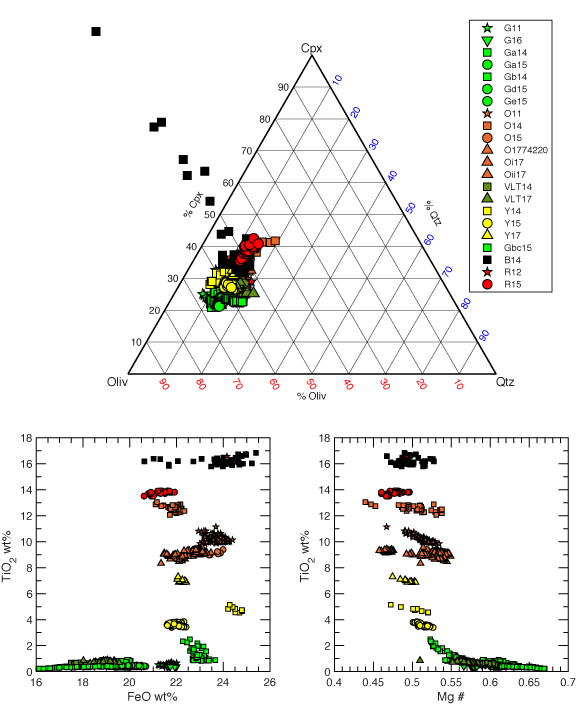
2: ReversePetrogen: a Multiphase Dry Reverse Fractional Crystallization and Mantle Melting Thermobarometer (includes ImportPlot).
Link to download RevPet from the Harvard Dataverse
Example RevPet outputs:
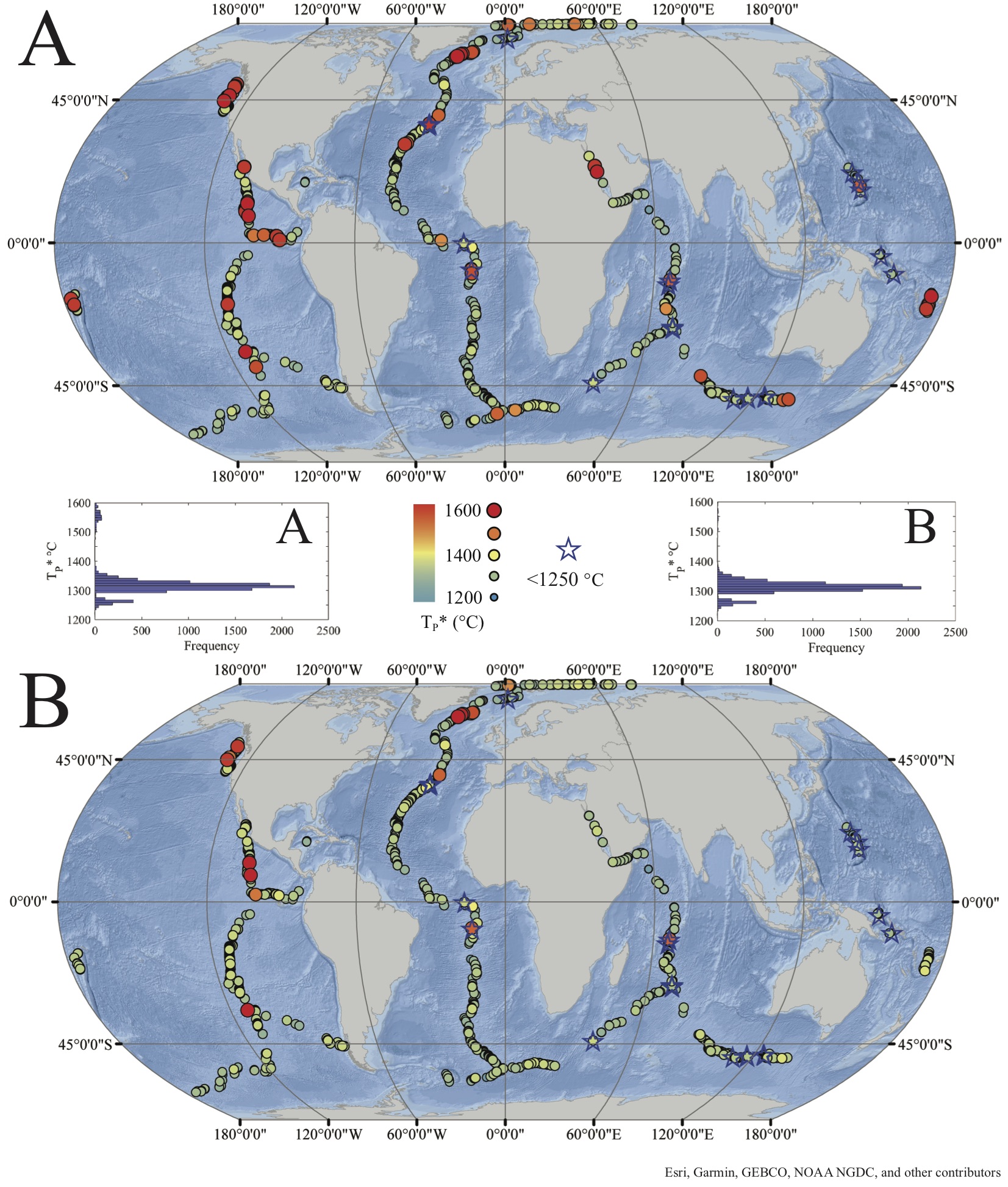
Figure 10 Map of Maximum Apparent Mantle Potential Temperature at Mid-Ocean Ridges (from Krein et al. 2021, in revision). Upper panel shows all well-fitting melting preductions. Lower panel shows subset of predictions in upper panel with unique reverse fractional crystallization scenarios (i.e., a very low standard deviation in apparent mantle potential temperature).
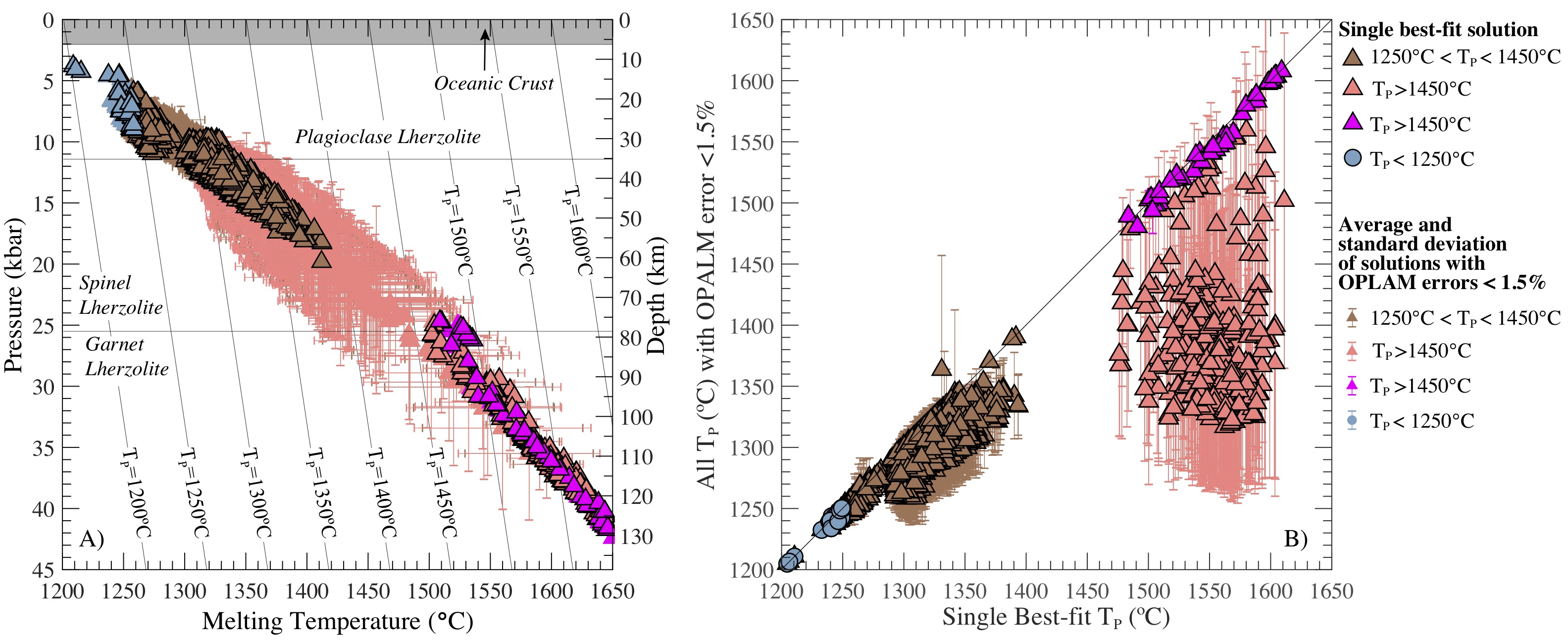 Figure 9 RevPet mid-ocean ridge basalt melting conditions from Krein et al. (2020, submitted). A melting condition prediction depends on the fractional crystllization path; in some cases, a single basalt can have multiple viable paths of reverse fractional crystallization. These figures show both the melting conditions from the single best-fitting path (triangles with black outline, no errorbars), as well as the average and standard deviation of all the possible paths (triangles without black outlines, with error bars).
Figure 9 RevPet mid-ocean ridge basalt melting conditions from Krein et al. (2020, submitted). A melting condition prediction depends on the fractional crystllization path; in some cases, a single basalt can have multiple viable paths of reverse fractional crystallization. These figures show both the melting conditions from the single best-fitting path (triangles with black outline, no errorbars), as well as the average and standard deviation of all the possible paths (triangles without black outlines, with error bars).
❮ ❯
3: Petrogen: A Geodynamically-informed Mantle Melting Model (Polybaric or Isobaric)
Harvard Dataverse link, where code will be maintained. README contains directions
Download entire zipped package of files. Email me for help.
See Krein, S. Brown, M. D. Behn., T. L. Grove. (2020). Origins of Major Element, Trace Element, and Isotope Garnet Signatures in Mid-Ocean Ridge Basalts. Journal of Geophysical Research: Solid Earth, 125, 1-33. Link to paper
Example Petrogen outputs:
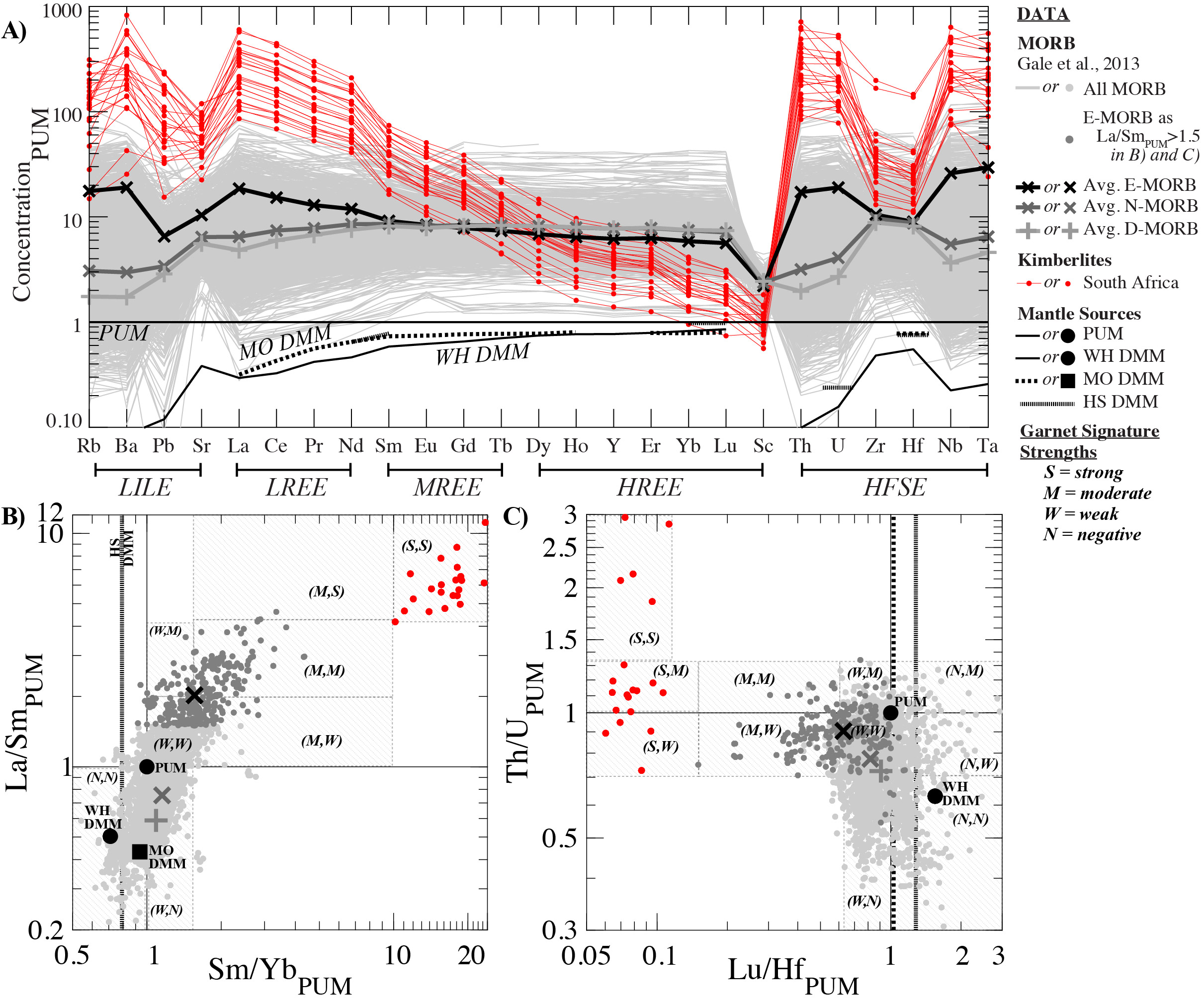
Figure 1 from Krein et al. (2020). Plots show trace element garnet signatures in mid-ocean ridge basalts, kimberlites (Becker & Le Roex, 2006), primitive upper mantle (PUM), and depleted MORB mantle (DMM) in (a) spider diagrams and (b and c) ratio–ratio plots. Striped boxes in (b) and (c) define regions of garnet signature strengths in the x and y directions. DMM from WH = Workman and Hart (2005), MO = McKenzie and O'Nions (1991), and HS = Hirschmann and Stolper (1996). Petrogen predicts these chemical signatures under different manlte conditions (e.g., temperature, composition, spreading rate, porosity).
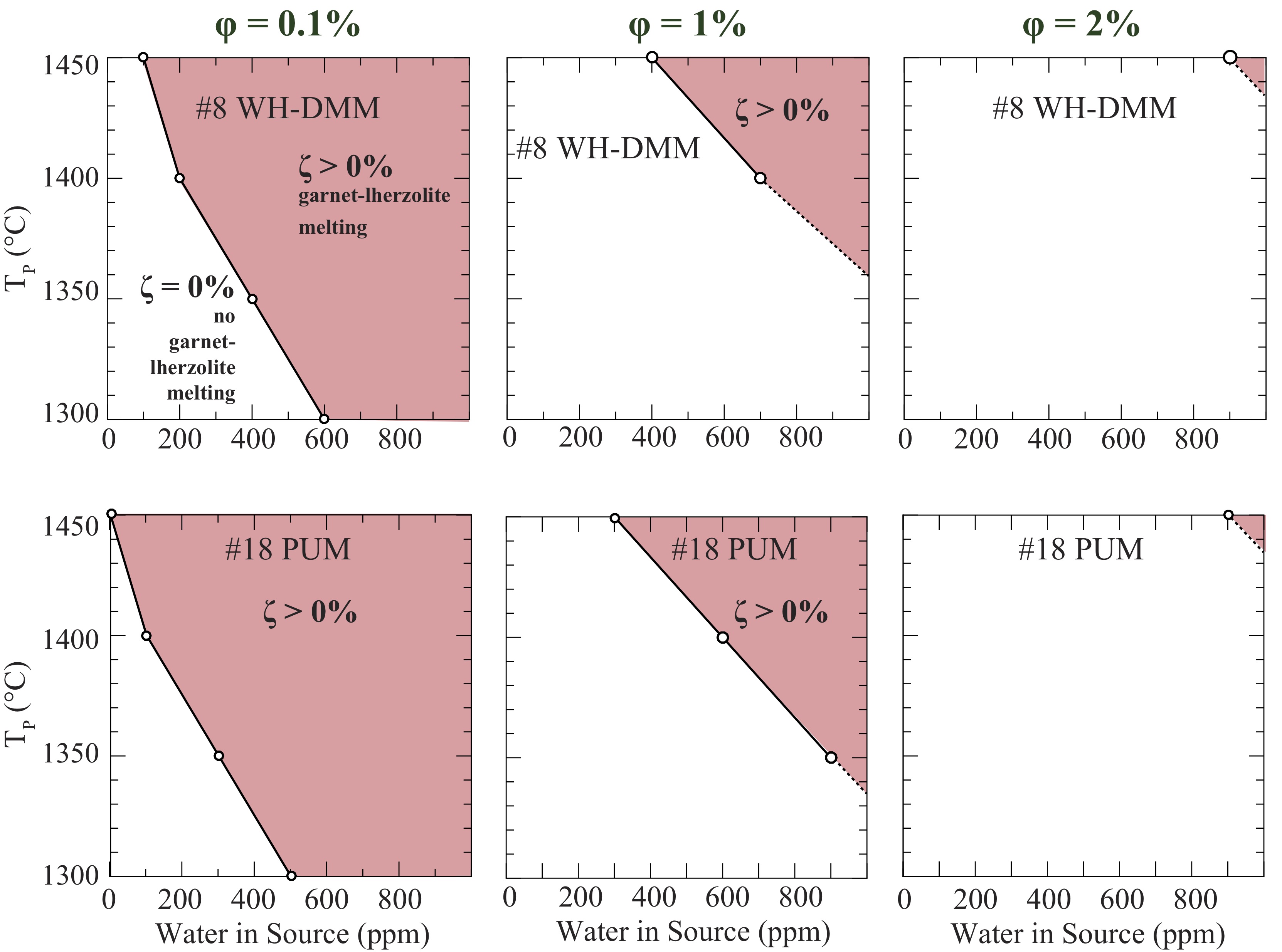
Figure 4 from Krein et al. (2020). Figures show effect of mantle porosity (φ) (columns), bulk composition (rows), water content (x-axis), and mantle potential temperature (TP) (y-axis) on extracting melts from garnet peridotite.
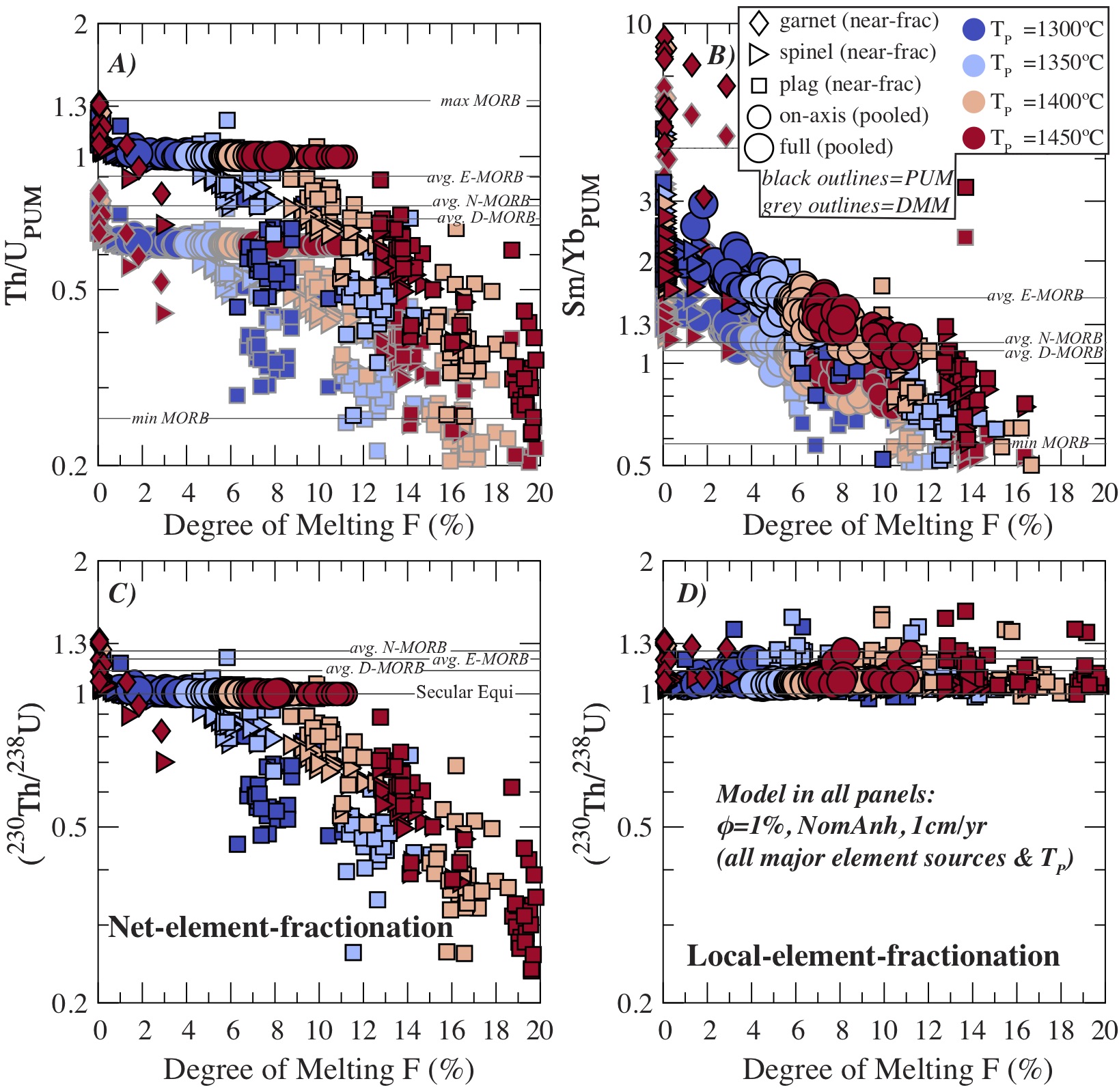
Figure 10 from Krein et al. (2020). Figures show garnet trace element and isotopic signatures in near-fractional and pooled melts at different mantle potential temperatures of 31 different mantle bulk compositions as function of degree of melting. Horizontal lines indicate signatures in mid-ocean ridge basalts.
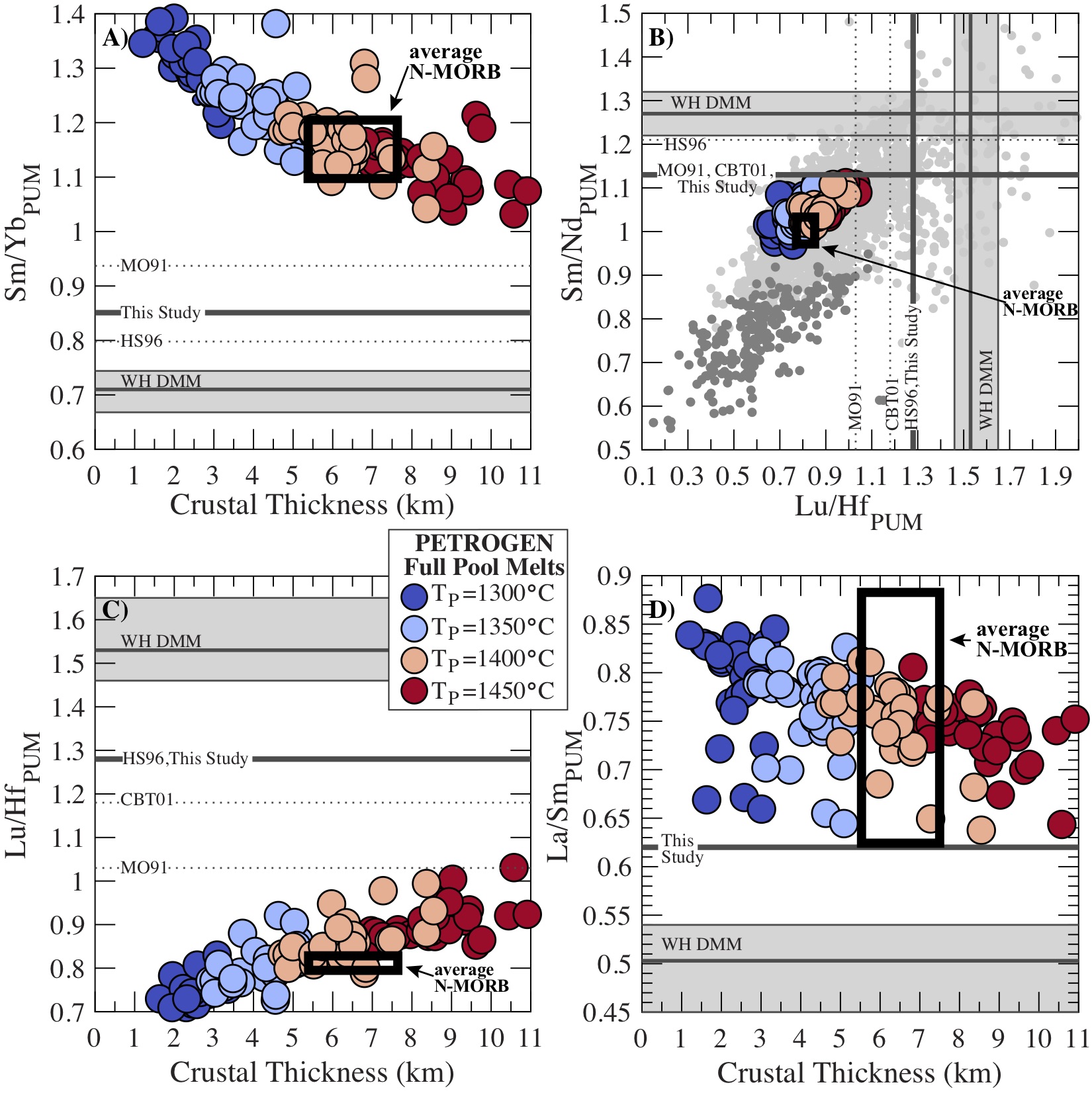
Figure 11 from Krein et al. (2020). Figures show garnet signatures in pooled melts of melts produced by differnet mantle potential temperature as a function of crustal thickness. The trace element signatures in average mid-ocean ridge basalts (average N-MORB) as well as MORB crustal thickness can be produced by melting a mantle with potential temperatures between 1350–1400°C with a trace element source composition in between that of McKenzie and O'Nions (1991), Hirschman and Stolper (1996), and Workman and Hart (2005) without invovling garnet pyroxenite.
❮ ❯
4: DirectDUDTh
Link for DirectDUDTh on GITHUB
Calculates DU, DTh, and DU/DTh during melting required to produce basalts with (230Th/238U) and (226Ra/230Th) disequilibria
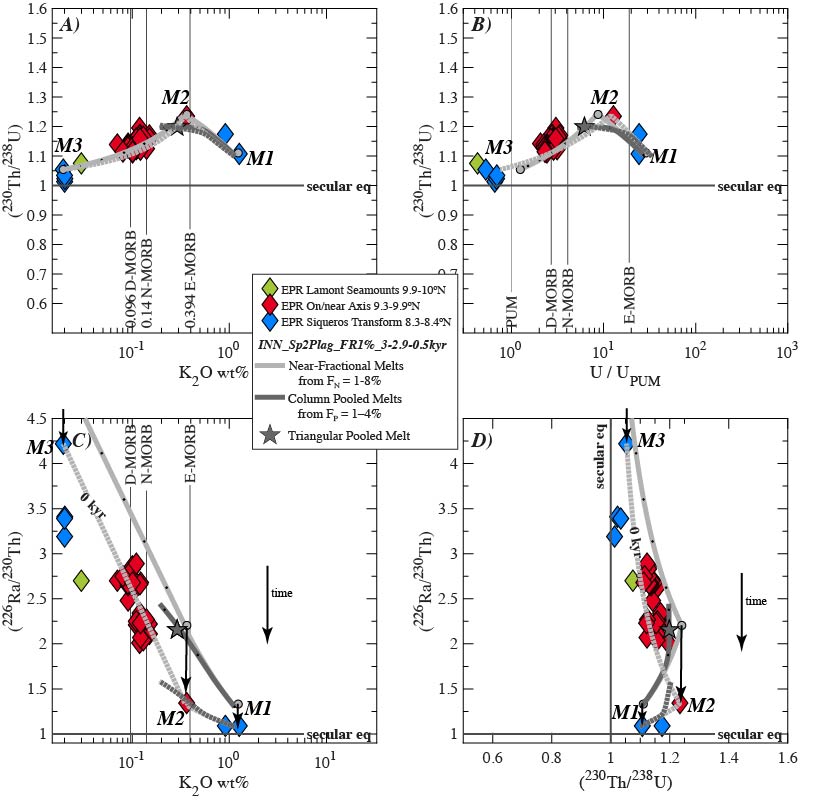
5: Calculating Equilibrium Plagioclase Compositions from Grove et al. 1992
Link for Grove et al. 1992 Plag Comps on GITHUB
Reads in liquid compositions from a user-tagged generic spreadsheet, and calculates equilibrium plagioclase compositions. Results are automatically clipped to the clipboard
6: Method for minimize error between (#3) model primary melts and (#4) corrected erupted model mantle melts
Coming soon

-01.jpg)

